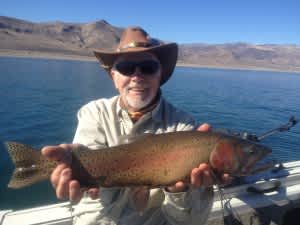The Science Behind UV Products and Lures
Wild Fish Wild Places 03.07.13

As you browse through your favorite sporting goods store this spring you will notice an increase in the amount of UV (ultraviolet) products hitting the shelf. The latest buzz in the fishing world is the integration of different types of UV products in the way of materials and paints.
Why is this important?
Recent scientific studies have shown that predatory fish use UV to seek out baitfish. Fish vision is mediated by four visual pigments that absorb various wavelengths of light. Each pigment is constructed from a chromophore and the transmembrane protein, known as opsin. Mutations in opsin have allowed for visual diversity, including variation in wavelength absorption.A mutation of the opsin on the SWS-1 pigment allows some vertebrates to absorb UV light (≈360 nm), so they can see objects to reflect UV light.A wide range of fish species has developed and maintained this visual trait throughout evolution, suggesting it is advantageous. UV vision may be related to foraging, communication, and mate selection. Recent research articles report that UV vision appears to be widespread in freshwater fish, turtles and most saltwater marine species. For example, juvenile Brown trout live in shallow water where they use ultraviolet vision to enhance their ability to detect zooplankton.
Alright, enough of the boring stuff. How does that equate to catching more fish?
Some popular companies have already hit the market this season with their new lines of UV products. Fly fishing material, Sierra Spoon, Tasmanian Devil, Flatfish, and Panther Martin are among the few leading the way. The Wild Fish Wild Places team has been product testing the new FishseeUV lures by Panther Martin since last summer. We are really excited about this new concept and very impressed with the effectiveness of the color combinations. On a recent trip to Pyramid Lake, NV we tested the lures on the famous Lahontan Cutthroat Trout on a suspended trolling pattern with impressive results. We landed a handful of nice fish with one weighing in around 5 pounds. We feel the new UV color patterns in all fly material and lures are giving us an advantage by allowing us more options for finicky fish. So this year when you head to the store to stock up for that next fishing trip, try some of the great new UV options available. I think you will be pleasantly surprised.

